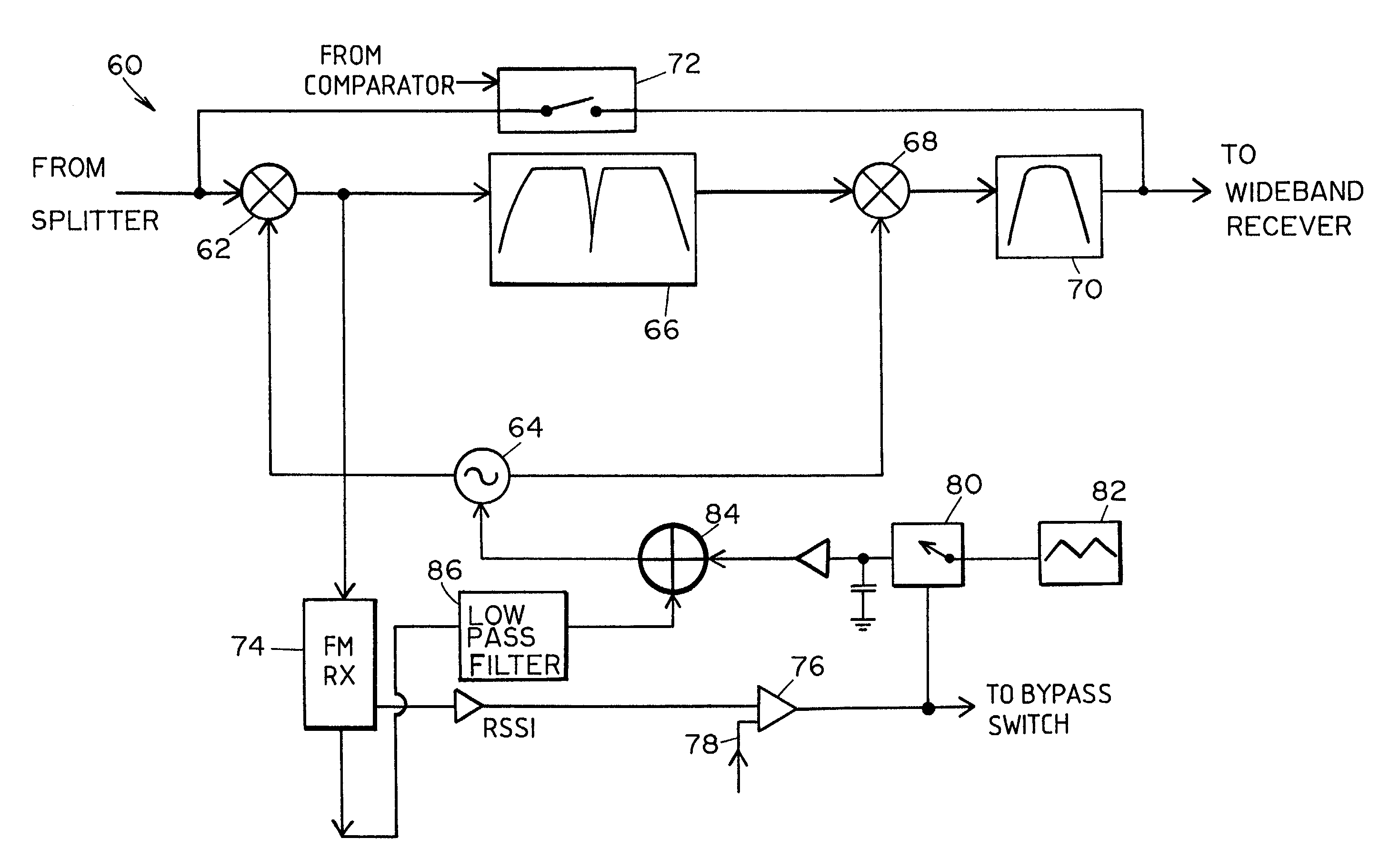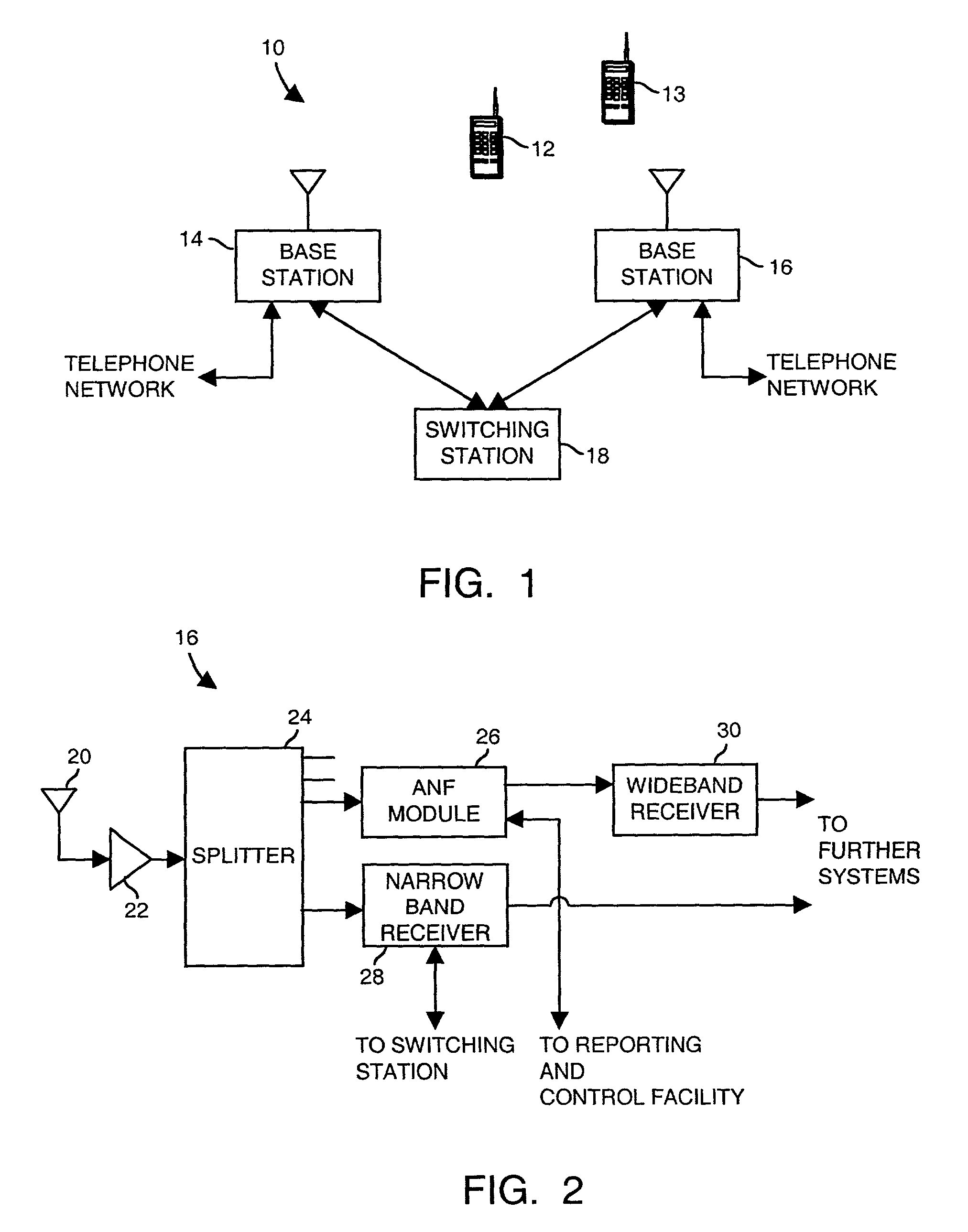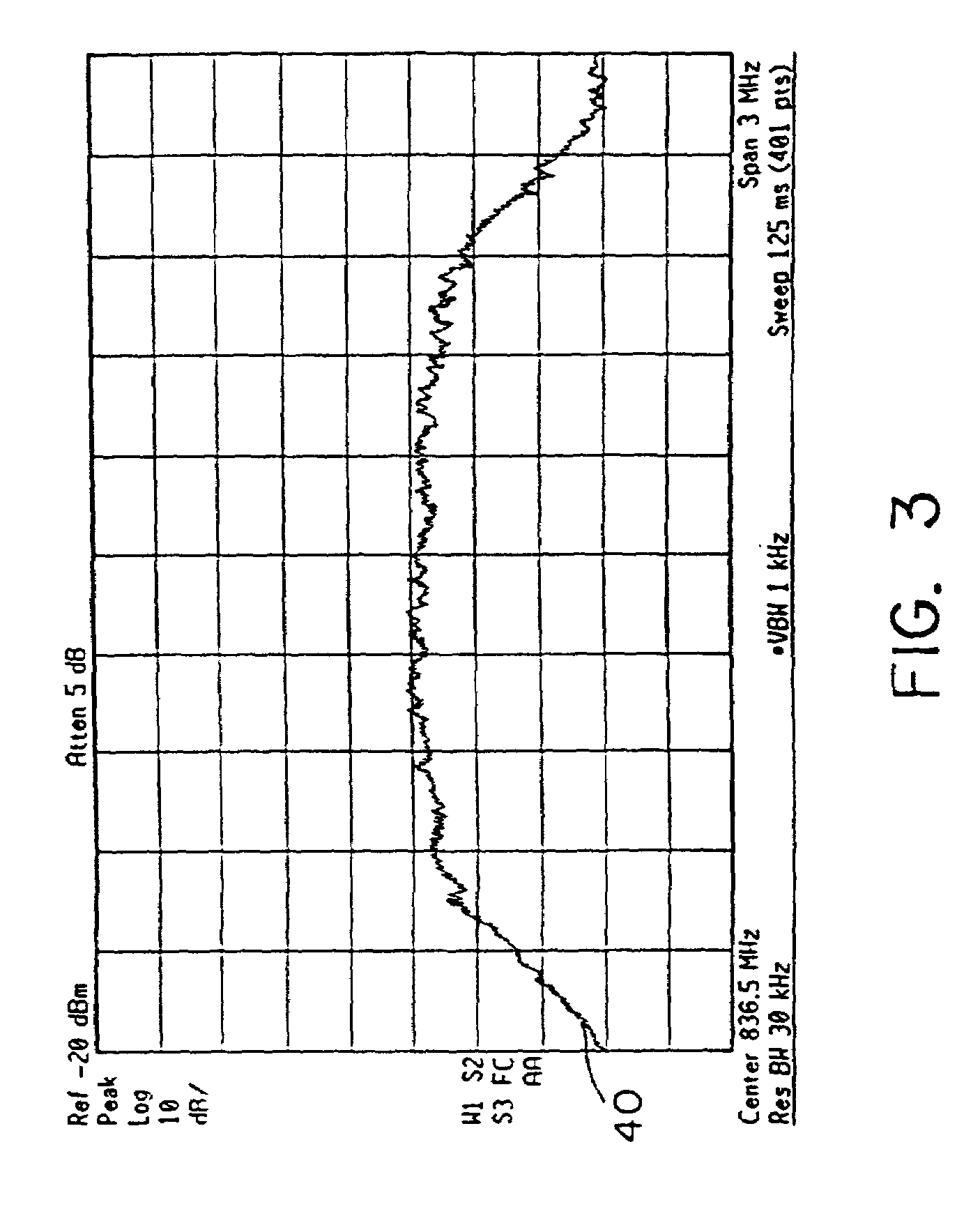Interference detection, identification, extraction and reporting
a narrowband interference and detection technology, applied in the field of communication systems, to achieve the effect of selectively removing narrowband interferen
- Summary
- Abstract
- Description
- Claims
- Application Information
AI Technical Summary
Benefits of technology
Problems solved by technology
Method used
Image
Examples
Embodiment Construction
[0032]As disclosed in detail hereinafter, a system and / or a method for detecting, identifying, extracting and reporting interference may be used in a communication system. In particular, such a system or method may be employed in a wideband communication system to protect against, or to report the presence of, narrowband interference, which has deleterious effects on the performance of the wideband communication system.
[0033]As shown in FIG. 2, the signal reception path of the base station 16, which was described as receiving narrowband interference from the mobile unit 12 in conjunction with FIG. 1, includes an antenna 20 that provides signals to a low noise amplifier (LNA) 22. The output of the LNA 22 is coupled to a splitter 24 that splits the signal from the LNA into a number of different paths, one of which may be coupled to an adaptive notch filter (ANF) module 26 and another of which may be coupled to a narrowband receiver 28. The output of the ANF module 26 is coupled to a w...
PUM
 Login to View More
Login to View More Abstract
Description
Claims
Application Information
 Login to View More
Login to View More - R&D
- Intellectual Property
- Life Sciences
- Materials
- Tech Scout
- Unparalleled Data Quality
- Higher Quality Content
- 60% Fewer Hallucinations
Browse by: Latest US Patents, China's latest patents, Technical Efficacy Thesaurus, Application Domain, Technology Topic, Popular Technical Reports.
© 2025 PatSnap. All rights reserved.Legal|Privacy policy|Modern Slavery Act Transparency Statement|Sitemap|About US| Contact US: help@patsnap.com



